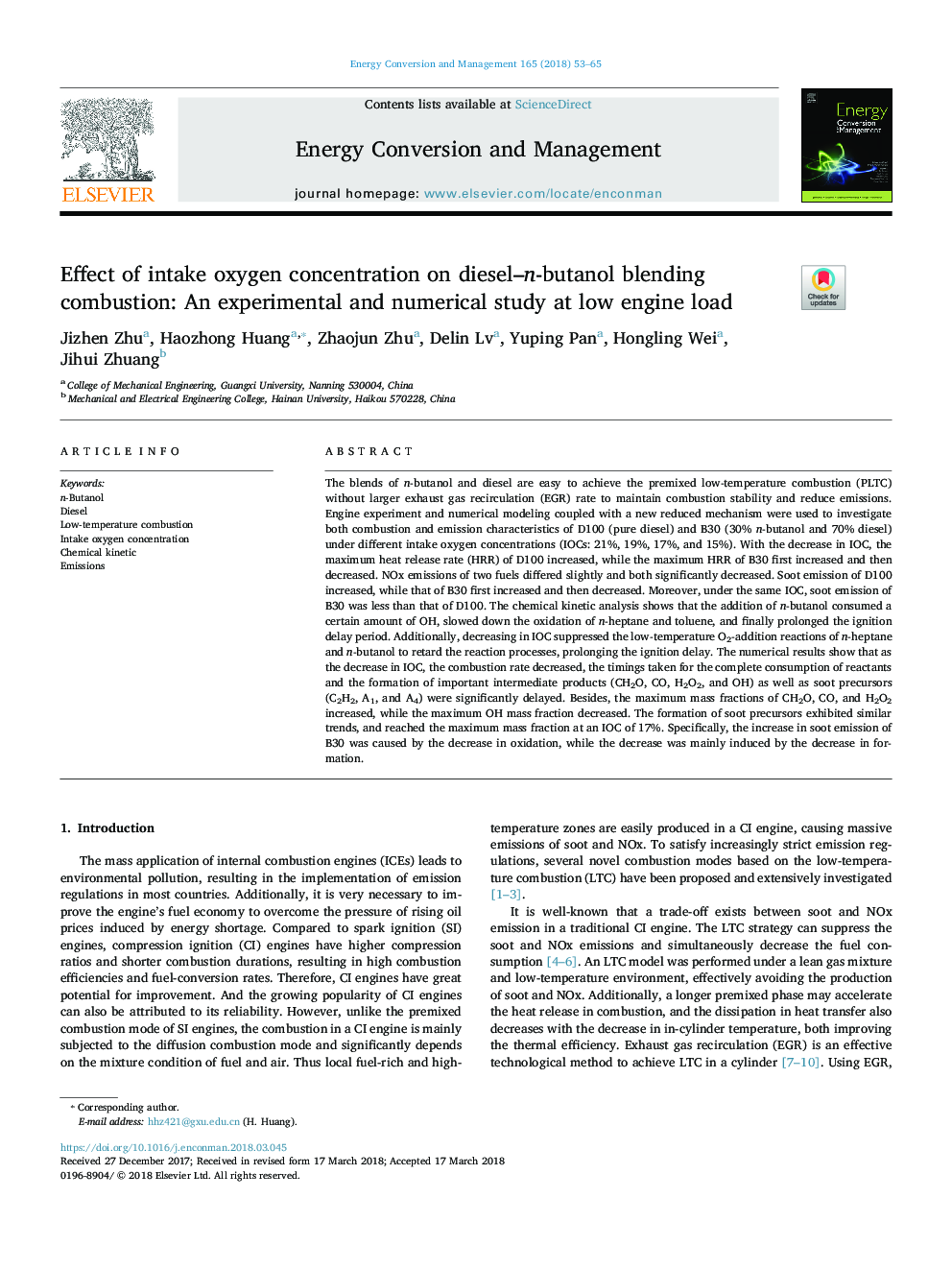| کد مقاله | کد نشریه | سال انتشار | مقاله انگلیسی | نسخه تمام متن |
|---|---|---|---|---|
| 7158596 | 1462797 | 2018 | 13 صفحه PDF | دانلود رایگان |
عنوان انگلیسی مقاله ISI
Effect of intake oxygen concentration on diesel-n-butanol blending combustion: An experimental and numerical study at low engine load
ترجمه فارسی عنوان
اثر غلظت اکسیژن مصرفی بر احتراق ترکیب دیزل-نان بوتانول: یک مطالعه تجربی و عددی در بار موتور کم
دانلود مقاله + سفارش ترجمه
دانلود مقاله ISI انگلیسی
رایگان برای ایرانیان
کلمات کلیدی
موضوعات مرتبط
مهندسی و علوم پایه
مهندسی انرژی
انرژی (عمومی)
چکیده انگلیسی
The blends of n-butanol and diesel are easy to achieve the premixed low-temperature combustion (PLTC) without larger exhaust gas recirculation (EGR) rate to maintain combustion stability and reduce emissions. Engine experiment and numerical modeling coupled with a new reduced mechanism were used to investigate both combustion and emission characteristics of D100 (pure diesel) and B30 (30% n-butanol and 70% diesel) under different intake oxygen concentrations (IOCs: 21%, 19%, 17%, and 15%). With the decrease in IOC, the maximum heat release rate (HRR) of D100 increased, while the maximum HRR of B30 first increased and then decreased. NOx emissions of two fuels differed slightly and both significantly decreased. Soot emission of D100 increased, while that of B30 first increased and then decreased. Moreover, under the same IOC, soot emission of B30 was less than that of D100. The chemical kinetic analysis shows that the addition of n-butanol consumed a certain amount of OH, slowed down the oxidation of n-heptane and toluene, and finally prolonged the ignition delay period. Additionally, decreasing in IOC suppressed the low-temperature O2-addition reactions of n-heptane and n-butanol to retard the reaction processes, prolonging the ignition delay. The numerical results show that as the decrease in IOC, the combustion rate decreased, the timings taken for the complete consumption of reactants and the formation of important intermediate products (CH2O, CO, H2O2, and OH) as well as soot precursors (C2H2, A1, and A4) were significantly delayed. Besides, the maximum mass fractions of CH2O, CO, and H2O2 increased, while the maximum OH mass fraction decreased. The formation of soot precursors exhibited similar trends, and reached the maximum mass fraction at an IOC of 17%. Specifically, the increase in soot emission of B30 was caused by the decrease in oxidation, while the decrease was mainly induced by the decrease in formation.
ناشر
Database: Elsevier - ScienceDirect (ساینس دایرکت)
Journal: Energy Conversion and Management - Volume 165, 1 June 2018, Pages 53-65
Journal: Energy Conversion and Management - Volume 165, 1 June 2018, Pages 53-65
نویسندگان
Jizhen Zhu, Haozhong Huang, Zhaojun Zhu, Delin Lv, Yuping Pan, Hongling Wei, Jihui Zhuang,
